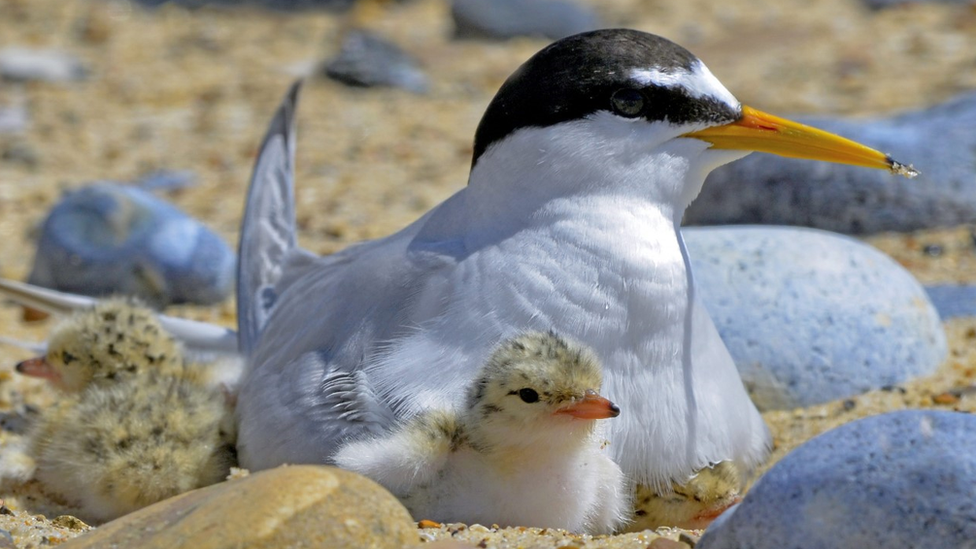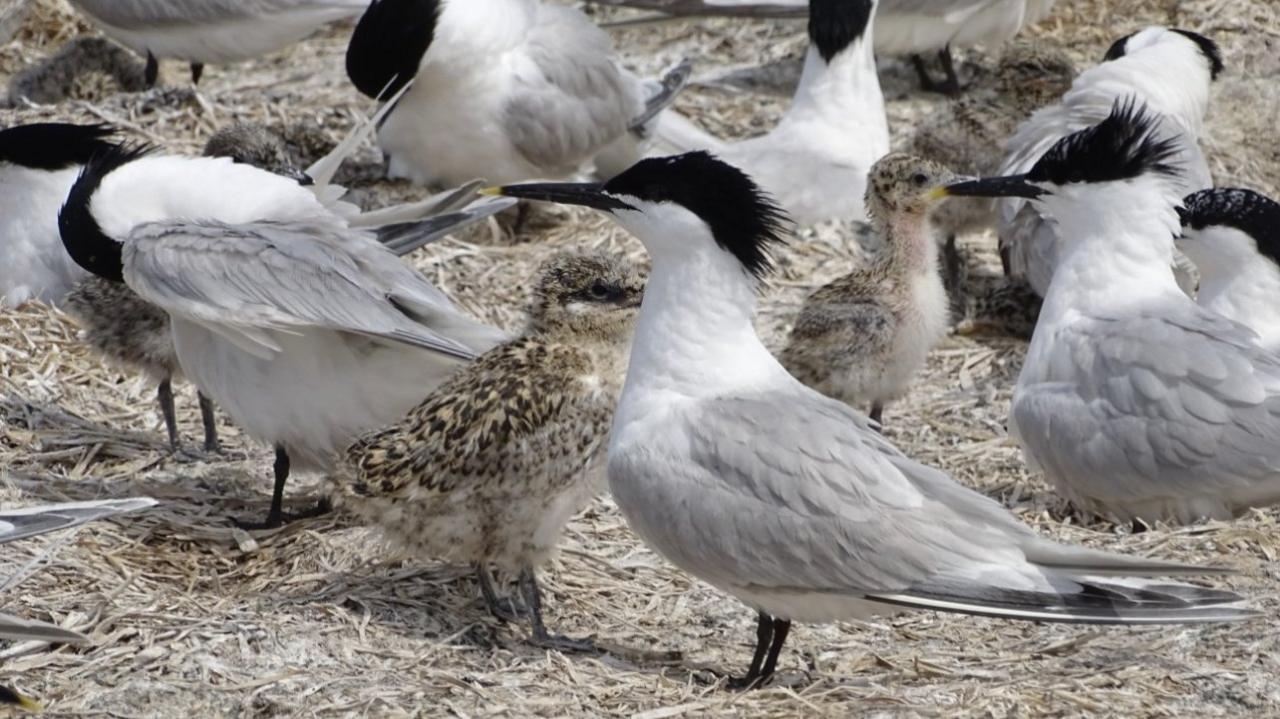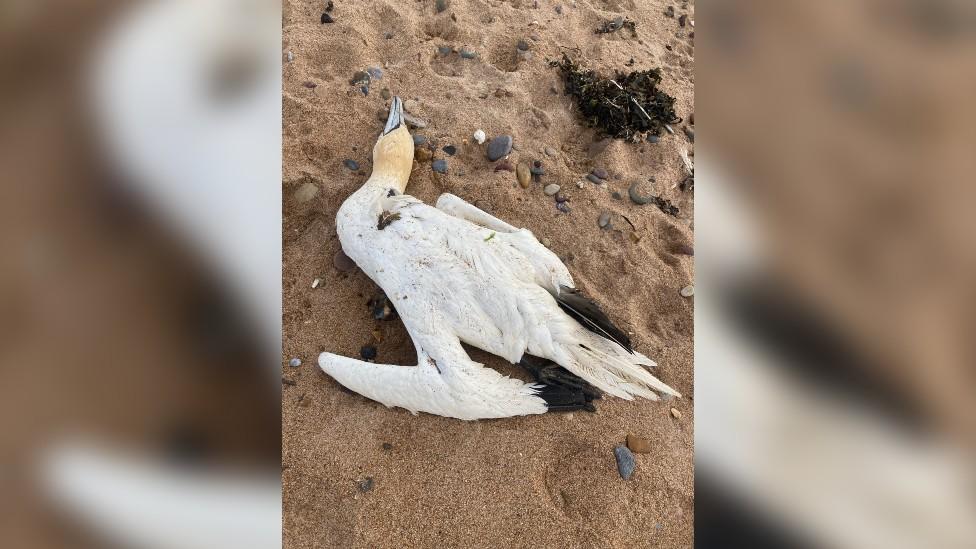Cumbrian tern colony 'flourishing' due to conservation work
- Published

Terns, like these Sandwich terns, embrace an abundance of small fish to feed on close to Hodbarrow
Conservation work to improve the habitat of migrating seabirds has resulted in a "flourishing" colony at one site, the RSPB has said.
The highest numbers of some birds for 40 years are now being seen at RSPB Hodbarrow on the South Cumbrian coast.
Little tern numbers have doubled to 42 breeding pairs, there are 56 pairs of common terns and nesting eiders have risen from six to 52 pairs.
The work has created a new island secured by anti-predator fencing.

The new island (on left) is intended to provide the perfect nesting site for birds like terns
The site near Millom is a coastal freshwater lagoon surrounded by a sea wall built in the 1890s when the former iron mine was at its peak.
Slag waste from the process which was dumped along the sea wall provides the ideal breeding grounds for the beach-nesting birds as it is sheltered from the tide.
Work funded by the EU started in 2021, to move limestone slag and create a new island, increasing nesting space.

Work has been carried out to create a new island for birds to nest away from predators
Throughout spring seabirds and waders like oystercatchers and ringed plovers start to make their journey back to the site after wintering off the coast of Africa.
Already protected by an in-water fence to keep out predators such as foxes, it is hoped the additional space will reduce competition among the species.
Site manager Dave Blackledge said: "The RSPB, with partners, is providing a network of safe places for seabirds to rest, breed and feed and the story doesn't just end with the breeding season, birds need space on our beaches no matter what time of year.
"We're delighted the tern colony here in Cumbria is now flourishing thanks to our conservation efforts."

Volunteers at Hodbarrow have been helping to protect little terns so they can raise their chicks safely

Follow BBC North East & Cumbria on Twitter, external, Facebook, external and Instagram, external. Send your story ideas to northeastandcumbria@bbc.co.uk, external.
- Published2 September 2022

- Published10 August 2022

- Published25 July 2022

- Published8 June 2022
